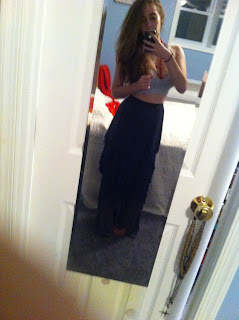I had not smiled in a quite awhile. And I did not plan to smile that day - in those moments - but he made me feel beautiful. Not because he loved me in a romantic way, but in the way that a friend may love you. That is, after all, the best kind of love. It is far less likely that such a relationship will break your heart, your spirit, and I know this one will not.
He was so kind and tender with his words that I could feel my soul healing with every brush stroke, every etched line and crevice he so masterfully crafted. So I showed him no sign of a broken heart - of my broken heart. It’s wonderful what such an exchange of the human spirit can do to a soul - and none more than the exchange of an artist and his muse. And I am the muse. The muse portrayed with the happiness due to me!! And I will always love him for it. Though he did not complete the work for me, he triumphed in the completion of my upset, my sadness.
I lost my little girl four years ago. I did not know what would become of me without her - without her here with me - and the hole in my heart grew to to a depth too grossly immense, too vividly substantial, that it’s dissolution and eradication seemed so far out of my reach. Too far out of my grasp. I healed rather minimally through my sweet and blessed children, my husband, and my glorious friends - who never failed to uplift my spirits, but there was always a piece missing. One I could not fulfill.
Sadness is a poison. It seeps through the veins of the disheartened so mercilessly, so unsympathetically, that it will turn the most benevolent and kindhearted souls into spirits of coldness and indestructible stone. I remember feeling such sadness that I could not feel my toes - and I could not get out of my sweet bed - because I could not feel my heart. My heart was missing. It was so hurt by me - by my loss - that it could not live happily in my own body. My heart was hurt. Plain and simple. My heart hurt.
But how he fulfilled my heart for me! What is a woman if she is not the leading lady of her own life? Of her own destiny? And this is what he asked me and inquired of me. And I know that a woman’s worth is of great value, and she should not be sorrowful if she has so much to live for and look forward to! How I love him for breathing such life into me and how I love him for showing me a way - and I will forever be known as the happy one because of him. I promise that I will return this to him with a smile - one that I will have forever. I could never repay him -- no amount of money, no amount of diamonds or gold can compensate him for what he did for me. For the energy he gave to me. And whenever I think of him, I am given life again! I can think so clearly and I can actually do what I never thought possible - because he healed me with a simple brush stroke. With his art. He risked his station in life for me - he risked his career to heal me - and I will never forget it. I am forever indebted to him, for turning the light in my soul on again. And I will pay him back with my happiness,
I will pay him back with a smile.

























